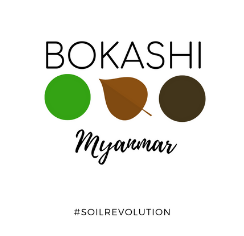The theme for World Environment Day this year was air pollution. A HUGE subject that gets way too little attention. Which is really a pity. Maybe that will change now?
There are so many aspects of it that it’s hard to know where to start. But one central part of the problem, in Myanmar and neighbouring countries, is the terrible damage caused by burning leaves. Especially when they are burnt together with plastic.
The air smells terrible, people are choking on their way to work, children are coughing during their lessons. People get sick and, actually, we have no idea about the long-term health consequences.
The smoky air of Inle Lake
At Inle Lake, where our team spent some time recently talking to restaurant owners and others in the tourism industry, there are other consequences too. Smoke and smell and toxic air hardly go hand-in-hand with attracting tourists.
They want help from us to find new ways of working with dry leaves. Part of the issue is that people just don’t know what the alternatives are. Are there any?
Of course there are! Dry leaves are a fabulous base for any form of compost. Plants love to grow in them. They are a valuable part of the carbon cycle. And they should be used.
So, how?
We made this short film for them that they showed on World Environment Day – and others have been spreading it further, which we’re happy to hear. The message is there are ways to use dry leaves in a simple way that can be handled on any street corner, suburban block, in any hotel garden or urban park.

It’s not hard — the issue, as always, is knowledge and methods.
These are things we know about at Bokashi Myanmar, after all it’s our work. We collect huge amounts of dry leaves every dry season to use in our composting process, and we have developed a few different ways of using them on different scales. Part of what we do is run training courses to share this knowledge (if you’d like to come to our bokashi yard with your team and learn, please contact us)
Making compost from dry leaves
Our basic method of dealing with leaves and food waste on a larger scale is our bokashi compost stacks, you can read more about how to make them here. But we’ve also made leaf gardens as shown in the film using stacked bricks and a lot of leaves. Plants love to grow in these, and they are very quick and easy to build. All you need is leaves!

Another solution, that we have yet to document, is the triple cube: basically a set of three compost cubes made from shipping pallets in the same style as we do in the bigger yard. Cube #1 is used to store leaves throughout the season. Cube #2 is used to make bokashi compost as described in the previous link. Cube #3 is used to make a second round of bokashi compost while the first is maturing. And so it goes on. Simple and effective, and not big on space. Try it! Or come to our yard and we will show you.

Why do people go on burning leaves?
Tradition, mainly — and lack of alternatives. There is some misunderstanding that the CO2 generated from burning leaves is good for trees, after all they breathe in CO2 and breathe out oxygen. Not correct, obviously, but a persisting fallacy.
Sweeping up plastic into the leaf pile is a convenient way of cleaning, and speeds up the combustion process. But it makes the already unhealthy air downright toxic. Plastic should obviously be separated, even if it’s an inconvenient work, and sent to landfill. Leaves should be composted and returned to the soil.
Many landfills won’t receive garden waste including leaves, and that is understandable given that most are facing capacity issues. But leaves left lying around on the street are likely to become homes for snakes and scorpions and that is not a good option. Dry leaves in dry season won’t break down on their own and it’s hard to compost them. But by keeping them wet (as in our brick garden above), nature will do most of the work. And by adding food waste in the form of bokashi, you not only help them break down quickly, you get an incredible space efficient and nutrient-dense form of compost. The best there is, actually. Just made from what you have lying around. Trash.
We are more and more convinced our mantra of “organic waste is not trash” is like a beacon for the future. It’s really needed to make this change, and set a new course for the future. The current course really doesn’t hold. Time to think new and start to get this right.
/Jenny and the Bokashi Myanmar team
Waste, according to the UN.
Open waste burning and organic waste in landfills release harmful dioxins, furans, methane, and fine particulate matter like black carbon into the atmosphere. Globally, an estimated 40 percent of waste is openly burned. The problem is most severe in urbanizing regions and developing countries. Open burning of agricultural and municipal waste is practiced in 166 out of 193 countries.
Improving the collection, separation, and disposal of solid waste reduces the amount of waste that is burned or landfilled. Separating organic waste and turning it into compost or bioenergy improves soil fertility and provides an alternative energy source. Reducing the estimated one-third of all food that is lost or wasted can also improve air quality.
Source: https://www.worldenvironmentday.global/what-causes-air-pollution#waste


